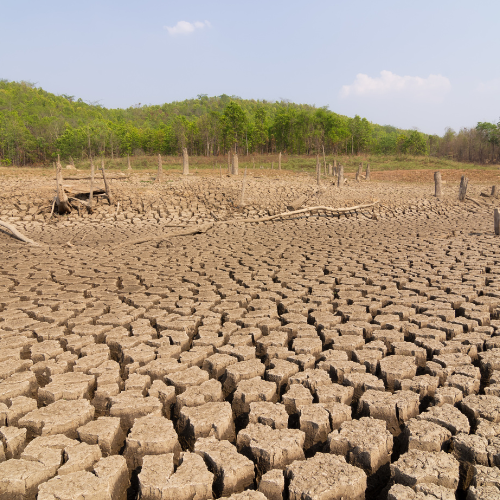Introduction.
Soil is the foundation of agriculture, nurturing plants and crops while playing a crucial role in our ecosystem. Unfortunately, the modern agricultural practices, climate change, and environmental degradation have led to the widespread issue of “dead soils.” This term refers to soils that have lost their fertility and ability to support plant life due to various factors, including nutrient depletion, erosion, salinization, and contamination. However, the good news is that restoring dead soils is not only possible but can also be achieved through innovative practices and sustainable methods. This article delves into the science of soil restoration, offering practical strategies, inspiring case studies, and encouraging readers to embrace new ways of reviving their land.

Understanding Dead Soils.
Before embarking on a restoration journey, it’s essential to understand what constitutes dead soils. Several factors contribute to soil degradation:
- Nutrient Depletion: Continuous cropping without adequate replenishment leaves soils deficient in essential nutrients like nitrogen, phosphorus, and potassium.
- Erosion: Wind and water erosion remove the topsoil, which is rich in organic matter and nutrients.
- Salinization: Poor irrigation practices can lead to salt accumulation, rendering soils inhospitable to most crops.
- Contamination: Pesticides, heavy metals, and chemicals from industrial activities can contaminate soils, affecting plant growth and food safety.
- Compaction: Heavy machinery and overgrazing can compact the soil, reducing its porosity and hindering root growth and water infiltration.
The Importance of Soil Restoration.
Restoring dead soils is not just about enhancing agricultural productivity; it also has far reaching implications for environmental health, biodiversity, and food security. Healthy soils play a vital role in carbon sequestration, water retention, and supporting diverse microbial communities, which are essential for robust ecosystems. Moreover, the restoration of soils can empower communities to achieve self sufficiency in food production, mitigate the effects of climate change, and improve resilience to extreme weather events.
Strategies for Restoring Dead Soils.
1. Assessing Soil Health.
The first step in restoring dead soils is conducting a thorough assessment of soil health. This process involves:
- Soil Testing: Analyze the soil for nutrient levels, pH, organic matter content, and contamination. Soil testing kits are widely available, and local agricultural extension services can offer assistance.
- Visual Inspection: Observe the soil structure, color, and presence of organic matter, worms, and other signs of microbial life.
- Understanding History: Consider the land’s history regarding previous crops, agricultural practices, and any potential pollution sources.
2. Adding Organic Matter
One of the most effective ways to restore dead soils is by increasing the organic matter content. Organic matter improves soil structure, enhances moisture retention, and provides nutrients for plants. Here are some strategies for adding organic matter:
- Composting: Create compost from kitchen scraps, yard waste, and other organic materials. Compost enriches the soil and promotes beneficial microbial activity.
- Cover Crops: Plant cover crops such as clover, vetch, or rye during the off season to prevent erosion and add organic material when tilled back into the soil.
- Mulching: Apply a layer of organic mulch (straw, leaves, wood chips) to suppress weeds, retain moisture, and gradually decompose, enriching the soil.
3. Implementing Crop Rotation.
Crop rotation is a sustainable practice that involves alternating different crops in a specific order over time. This technique prevents nutrient depletion, disrupts pest and disease cycles, and improves soil health. For example, following a nitrogen fixing crop like legumes with a nutrient demanding crop like corn can replenish soil nitrogen levels.
4. Practicing Conservation Tillage.
Reducing tillage can help restore soil structure and promote microbial life. Conservation tillage practices, such as no-till farming, leave the soil undisturbed, preserving its natural structure and moisture. This approach can enhance carbon sequestration and reduce erosion.
5. Utilizing Biochar.
Biochar, a charcoal like substance produced through pyrolysis, can be added to soil to improve fertility and carbon retention. It enhances soil aeration, water retention, and nutrient availability. Studies have shown that adding biochar can significantly increase crop yields in degraded soils.
6. Applying Green Manures.
Green manures are cover crops grown specifically to be tilled back into the soil to improve its fertility. Plants like buckwheat, clover, or rye can be used as green manures to enrich the soil with nutrients and organic matter.
7. Water Management.
Improper irrigation practices can exacerbate soil degradation. Implementing efficient water management techniques, such as drip irrigation or rainwater harvesting, can prevent salinization and improve overall soil health.
8. Engaging with Agroecology.
Agroecology emphasizes the sustainable and harmonious relationship between agriculture and the ecosystem. By adopting agroecological practices, farmers can enhance soil health while promoting biodiversity and resilience against climate change. Techniques include intercropping, agroforestry, and organic farming.
9. Promoting Soil Microbial Life.
Healthy soils are teeming with microbial life, which plays a crucial role in nutrient cycling and plant health. To promote microbial diversity:
- Minimize Chemical Inputs: Limit the use of synthetic fertilizers and pesticides that can harm beneficial microorganisms.
- Inoculate with Beneficial Microbes: Consider using microbial inoculants that introduce beneficial bacteria and fungi to the soil.
10. Community Engagement and Education.
Soil restoration is not solely an individual effort; it requires community involvement. Organizing workshops, sharing knowledge, and collaborating with local agricultural organizations can empower communities to adopt sustainable practices collectively.

Case Studies of Successful Soil Restoration.
Case Study 1: The Loess Plateau, China.
One of the most remarkable examples of soil restoration took place in the Loess Plateau of China. After decades of deforestation and unsustainable farming practices, the region suffered severe soil erosion and degradation. In the 1990s, a large scale restoration project was initiated, focusing on reforestation, terracing, and sustainable grazing practices. The results were astounding: over the years, more than 35,000 square kilometers of land were restored, increasing agricultural productivity and improving the livelihoods of local communities.
Case Study 2: The Sahel Region, Africa.
The Sahel region, known for its arid climate and land degradation, has witnessed innovative soil restoration efforts through a technique called “Farmer Managed Natural Regeneration” (FMNR). Farmers promote the growth of native trees and shrubs, which enhance soil fertility, prevent erosion, and provide shade for crops. This approach has led to increased agricultural yields and improved food security for many communities.
Case Study 3: The Rodale Institute, USA.
In the United States, the Rodale Institute has been a pioneer in organic farming and soil health research. Their long term studies have demonstrated that organic farming methods such as cover cropping, crop rotation, and reduced tillage can significantly improve soil health and crop productivity. The institute serves as a model for farmers seeking to transition to sustainable practices.

Restoring dead soils may seem daunting, but it is an achievable goal that can lead to profound transformations in agriculture and the environment. Each step taken toward soil restoration is a step toward a healthier planet, improved food security, and enhanced community resilience. As individuals and communities embark on this journey, remember that every small action counts.Whether it’s starting a compost pile, planting cover crops, or advocating for sustainable practices, your efforts contribute to a larger movement toward ecological balance and sustainability. Let the stories of successful restorations inspire you, and embrace creativity in your approach to soil health. Together, we can revive our dead soils and cultivate a bright, sustainable future.
In conclusion, the journey of restoring dead soils is an inspiring one, filled with opportunities for innovation, collaboration, and growth. With determination and creativity, we can turn degraded lands into thriving ecosystems that nourish both people and the planet.
Questions and Answers.
1. What are the main causes of soil degradation?
- The primary causes of soil degradation include nutrient depletion, erosion, salinization, contamination, and compaction from heavy machinery.
2. How can organic matter improve soil health?
- Organic matter enhances soil structure, improves moisture retention, provides essential nutrients for plants, and promotes beneficial microbial activity.
3. What is the significance of crop rotation in soil restoration?
- Crop rotation helps prevent nutrient depletion, disrupt pest and disease cycles, and improve overall soil health by alternating different crops.
4. What role does biochar play in soil restoration?
- Biochar improves soil fertility, enhances carbon retention, increases water retention, and promotes beneficial microbial life.
5. How can communities engage in soil restoration efforts?
- Communities can engage by organizing workshops, sharing knowledge, collaborating with local organizations, and adopting sustainable agricultural practices collectively.